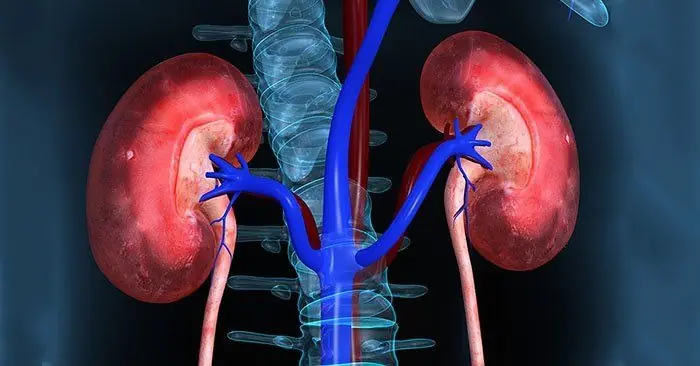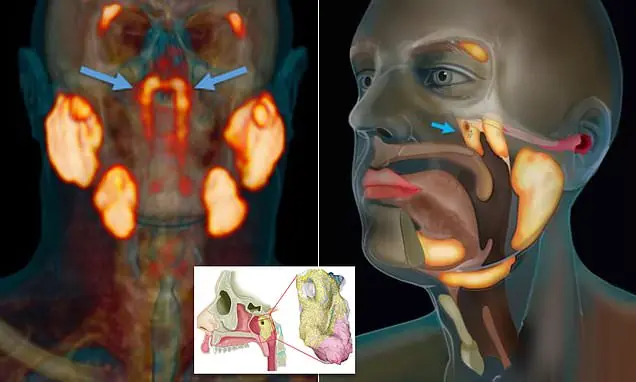
Preventing Stroke and Cerebral Infarction: Remember These 3 Health Indicators, 1 Critical Condition, and 6 Things You Should Never Ignore
Stroke and cerebral infarction are among the leading causes of death and disability worldwide. They often strike without warning, but the truth is that our bodies frequently give subtle clues long before a life-threatening event occurs. Prevention is always better than cure, and by staying alert to certain key indicators and lifestyle habits, we can greatly reduce our risk.
Here’s a simple yet powerful formula to keep in mind: 3 health indicators, 1 underlying condition, and 6 vital don’ts that could help you prevent a stroke or cerebral infarction.
The 3 Key Health Indicators You Must Monitor
-
Blood Pressure
High blood pressure, or hypertension, is the number one risk factor for stroke. It silently damages blood vessels over time, making them prone to rupture or blockage. Adults should aim for a reading below 120/80 mmHg, and regular monitoring is essential — especially for people over 40 or with a family history of cardiovascular disease.
-
Blood Sugar (Glucose Levels)
Elevated blood sugar levels not only increase the risk of diabetes but also contribute to damage in the arteries, which can lead to stroke. Fasting blood sugar should be maintained between 70–99 mg/dL. People with diabetes or prediabetes need to manage their condition strictly with medication, diet, and exercise.
-
Cholesterol
High levels of bad cholesterol (LDL) can lead to a buildup of plaque in the arteries, narrowing them and increasing the risk of blockage. Aim for LDL below 100 mg/dL and HDL (good cholesterol) above 40 mg/dL for men, and above 50 mg/dL for women.
The 1 Critical Condition to Watch Closely: Atrial Fibrillation
Atrial fibrillation (AF) is a heart rhythm disorder that increases the risk of stroke by up to five times. It causes the heart to beat irregularly, which can lead to blood clots that travel to the brain. Many people with AF don’t even know they have it until after a stroke. If you experience symptoms like palpitations, dizziness, or shortness of breath, consult a doctor immediately for an electrocardiogram (ECG).
6 Things You Should Never Ignore
-
Smoking
Smoking significantly increases stroke risk by damaging the cardiovascular system and increasing blood clot formation. Quitting smoking is one of the best decisions you can make for your heart and brain health.
-
Lack of Exercise
A sedentary lifestyle weakens the heart and contributes to obesity, high blood pressure, and poor circulation. Just 30 minutes of moderate activity per day can dramatically lower your stroke risk.
-
Obesity
Excess weight stresses the entire cardiovascular system. Maintaining a healthy Body Mass Index (BMI) under 25 can prevent hypertension and diabetes, two major stroke triggers.
-
Excessive Alcohol Consumption
Drinking too much alcohol raises blood pressure and can lead to atrial fibrillation. Limit alcohol to no more than 1 drink per day for women and 2 for men to reduce your stroke risk.
-
Ignoring Warning Signs
Sudden numbness, weakness (especially on one side of the body), confusion, trouble speaking, vision problems, or severe headache are all signs of a stroke. Act FAST – Face drooping, Arm weakness, Speech difficulty, Time to call emergency services.
-
Unmanaged Stress
Chronic stress raises blood pressure and triggers inflammation throughout the body. Managing stress through mindfulness, adequate sleep, and relaxation techniques is essential for stroke prevention.
Conclusion
Stroke and cerebral infarction can be devastating, but they are often preventable with proper awareness and action. By keeping an eye on three key health indicators (blood pressure, blood sugar, and cholesterol), watching out for atrial fibrillation, and avoiding six dangerous habits, you can greatly lower your risk.
Your brain and heart deserve your full attention. Take these signs seriously, don’t wait until it’s too late, and commit to a lifestyle that supports long-term health and well-being.
News in the same category


10 Snoring Solutions Your Partner Will Be Thankful For

6 Subtle Facial Clues That Can Reveal Serious Health Conditions

4 Changes in Your Fingers That Could Be Signs of Lung Can.cer – See a Doctor Immediately!

Cancer Doesn’t Hurt at First, But If You Notice These 8 Signs During Bathroom Visits, See a Doctor Immediately: Don’t Ignore Them

The world’s oldest woman, who lived to 117, ate the same meal every day throughout her life

Gynecologist Refuses to Treat Trans Woman, Sparking Backlash Over Refused Care

A 4-Year-Old Girl Nearly Lost Her Life to Diabetes — Parents in Tears: “I Spoiled Her Too Much!”

8 Signs of Kidney Failure That, If Ignored, Could Lead to a Lifetime of Dialysis

A 52-Year-Old Man Died from Diabetes: Doctor Warns – Remove These 4 Breakfast Foods from Your Table

Celebrities Reveal Ozempic Side Effects as Simulations Show Its Impact on the Body

Scientists Accidentally Discover New Human Organ Hidden in the Head

Unlock the Secret Power of Guava Leaves: Transform Your Hair, Skin, and Health Naturally

New Study Finds Anal Cancer Rates Rising, Especially Among Older Women

The Strongest Teeth Whitening Recipe at Home in 2 Minutes: Whitening Yellow Teeth from Tartar Naturally with Tomatoes and… 🍅✨

Alarming Rise In Colon Cancer Among Young People May Be Linked To Contaminated Salad, Study Finds

Alarming Health Alert: Experts Say New Virus Is Nationwide — America Must Prepare Immediately

The Miracle Remedy That Has People Abandoning Hospitals: Cures Cancer, Diabetes, High Blood Pressure, and Poor Circulation!

DIY Lemon Ginger Turmeric Power Shots: Boost Your Health Naturally
News Post

Papal Conclave First Result Is In, Sparking Public Reactions — Details

Administrator of Liam Payne's $32.2 Million Estate Revealed, Causing a Public Stir

6 Dementia Symptoms You Might Overlook at First

Toddler Claims to Remember Being Murdered in a Past Life and Identifies Where He Was Buried

10 Snoring Solutions Your Partner Will Be Thankful For

6 Subtle Facial Clues That Can Reveal Serious Health Conditions

4 Changes in Your Fingers That Could Be Signs of Lung Can.cer – See a Doctor Immediately!

Cancer Doesn’t Hurt at First, But If You Notice These 8 Signs During Bathroom Visits, See a Doctor Immediately: Don’t Ignore Them

Details About Donald Trump Not Being Invited Back to the Met Gala Resurface - What Happened

She Was Dubbed 'The Most Beautiful Girl in the World' at 5 – How She Has Changed Will Shock You

I Photographed My Half-Sister's Wedding for Free, but She Said I Didn't Deserve a Seat Because I Was Working and Not a Guest

Ozempic at the Met Gala: 5 Celebs Who Reportedly Show Drastic Weight Loss — Hollywood Doctors Speak Out

I Noticed the Groom Kept Rubbing His Wrist at My Best Friend’s Wedding—So I Stepped in and Exposed a Terrible Secret

Anne Hathaway Faces Plastic Surgery Speculation After 'Tight' Met Gala Look Goes Viral

She Once Lived in a Shed With Her Mom, Not Knowing Her Father & Barely Surviving — Now She's a Top Star

Administrator of Liam Payne's $32.2 Million Estate Revealed, Causing a Public Stir

My Brother Forbade Me from Giving the Speech at Our Mom's Funeral Because 'No One Wants to Hear from the Adopted One'

My Neighbor Started a Barbecue Every Time I Hung Laundry Outside Just to Ruin It
